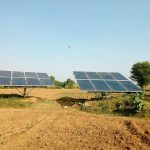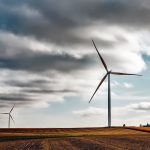Today, the greatest concern in terms of energy is its maintenance and storage rather than its production. It is necessary a system that allows large reserves of electricity to be stored so that you can use them at times of high demand and low production, where an extra boost is needed to meet the demands of the network.
With the necessary increase of renewables in the energy panorama, it has been appreciated that there is a demand that these forms of electricity production cannot supply due to natural causes (a succession of cloudy days or with little wind, for example) and wind and solar production are stopped. That is why there is a real need to conserve energy, even if it is not in the form of electricity as such, as is the case with hydroelectric storage; a technology that has been with us for 100 years and is proven to be effective and reliable.
By using two reservoirs connected to each other, a safeguard can be put in place for electricity production, as a pumping system makes it possible to store energy by elevating the water from a lower reservoir to a higher position. This means that electricity can be generated quickly by passing water through a turbine, without emitting a single gram of carbon dioxide into the atmosphere, and even more so if the pumping system is powered by the energy from the turbines, solar panels or wind turbines. Thus, the energy that is left over in periods of low consumption is used to pump the water and generate high quality energy to meet the needs of the network at peak demand.
This is also a cheap energy in variable costs because its cost per megawatt per hour ranges between 180 euros and 240 euros, compared to its most direct competition, batteries. The latter have a cost of MW/h that varies between 330 euros and 980 euros, being obviously higher.
Such is its reliability, that in a country like the United States the storage of energy by pumping represents about 97% of the total. In the North American country today there are more than 40 plants capable of producing 2.3 gigawatts of power, which would supply a large city like New York for several hours. In the case of Spain, only Iberdrola, the largest producer of this type of electricity, has the capacity to produce 3,192 megawatts. This high production capacity is due to the fact that, during much of the 20th century, all the power generated in Spain came from hydroelectric turbines. Today, a figure representing 100% of production reaches 12% in an average hydraulic year.
One of the problems associated with this storage system is the environmental and landscape impact of having to build reservoirs and turbines in natural environments, as well as the time needed to have the necessary permits and tenders and carry out the works, all at immense cost. It is for this reason that the idea is being developed to give a new life to abandoned mines, turning them into reservoirs, to save costs and reduce the impact.
In this context, pumping stations are a fundamental tool for the generation of energy of interminent production, given the cheap maintenance costs it entails. This will allow the configuration of the new energy mix based on renewable energies whose backup systems have a very important weight, given that sometimes they may not generate all the electricity needed.
In Hydraulic and Energy Projects we bet for this technology, carrying out designs and executions of pumping systems up to high pond using only solar energy. Hydraulic and Energy Projects we believe that being responsible to the environment is a responsibility, so we put our trust in clean and efficient energy with zero emissions into the atmosphere, which manages to save more than traditional diesel systems so that our customers get the most out of their agricultural systems and energy needs. All you have to do is contact us and we will take care of all parts of the process, from planning and tendering to construction.




